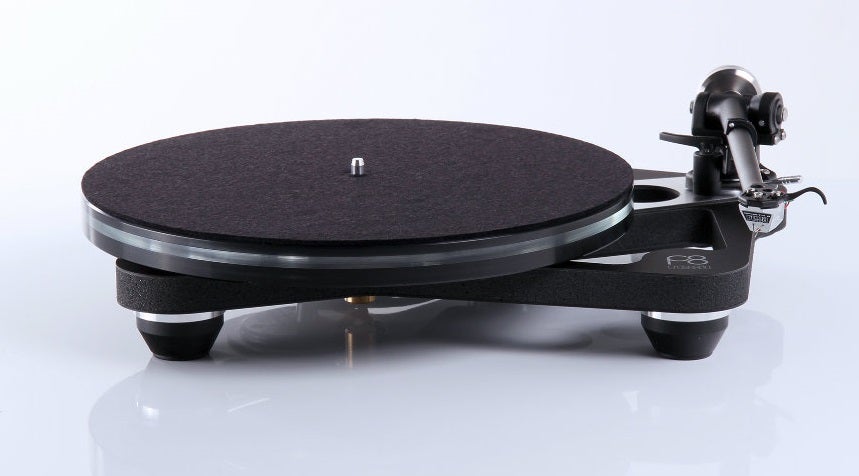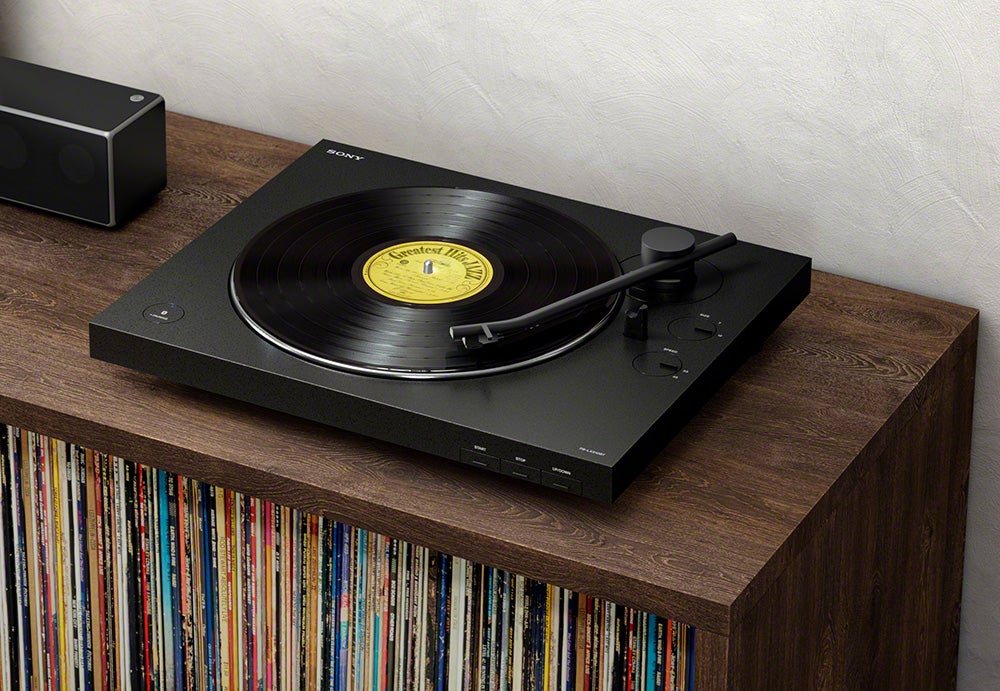iFi xDSD Gryphon Review
Hugely impressive portable DAC/headphone amp
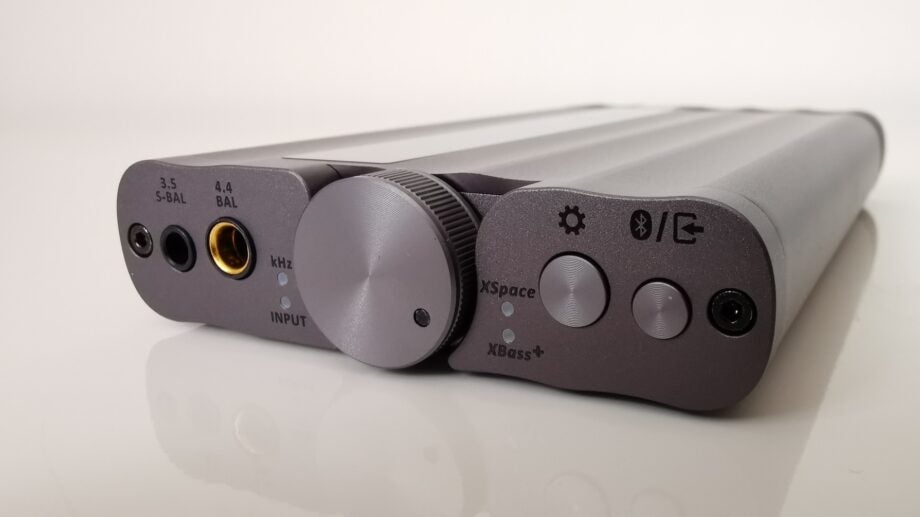

Verdict
The iFi Audio xDSD Gryphon is a hugely impressive portable DAC/headphone amp, with more functionality than most users will need. The amplifier is powerful enough to support most style of headphone and its stereo imaging and fine detail performance is outstanding.
Pros
- Bluetooth 5.1
- Native DSD and MQA decoding
- Class-leading connectivity
- Sublime audio performance
Cons
- Probably over-specified for many users
Key Features
- Wireless connectivityBluetooth 5.1 (with aptX HD and LDAC support)
- Hi-Res audioHi-Res PCM up to 32-bit/768kHz
- SpecsLow noise PureWave 1000mW amplifier
Introduction
The xDSD Gryphon from iFi Audio is a gloriously over-specified portable DAC/headphone amplifier that attempts to be pretty much all things to all headphone users – and largely succeeds.
An upgrade on 2018’s original xDSD from the Southport based outfit, it adds balanced analogue circuitry to complement its Bluetooth provision.
An upgraded stablemate to the brand’s Hip-dac2, its primary competition is the Chord Mojo 2. Stiff competition. Let’s see how it fares.
Availability
- UKRRP: £599
- USARRP: $599
- EuropeRRP: €599
- CanadaTBC
- AustraliaTBC
The xDSD Gryphon is available now and sells for £599. It’s more expensive than the Chord Mojo 2 headphone/DAC but remember that option requires the addition of a Chord Poly for wireless functionality, which doubles the overall price.
Design
- Compact design
- Wide-ranging connectivity
- Large OLED display
As we’ve come to expect from the design team at iFi, the xDSD Gryphon is slim, compact and beautifully tactile. The aluminium chassis is ridged, which not only looks cool but helps with grip, and it sports a large clear OLED display window which lights up when powered up.
In fact, you might not even realise it’s a screen because of the neat mirrored finish. The display is bright, and quickly scrolls through options such as brightness adjustment and BT control.
A satisfying central multi-function knob can be used to Power on, control volume and menu navigation.
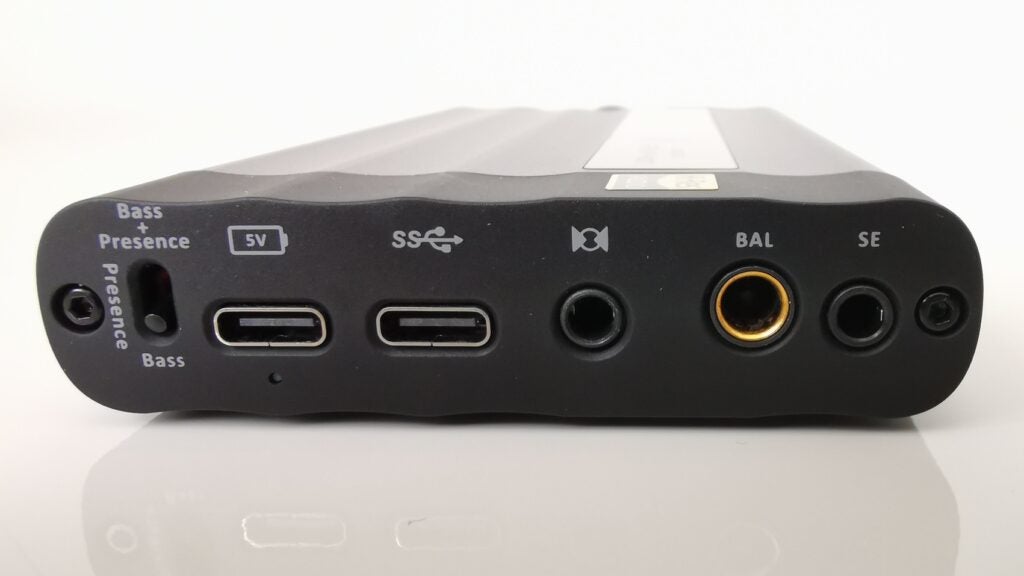
On the front fascia there’s both standard 3.5mm and 4.4mm balanced headphone jacks, plus settings and Bluetooth/ input selector buttons. A longer press on the former will get you into the menus. It’s here you can select from one of three filter settings – Bit-Perfect (which is sans filtering), Standard and GTO (Gibbs Transient Optimised).
As you might expect, the differences between these options are subtle. I tended to leave the Gryphon on Bit Perfect, more for peace of mind than anything else.
To the rear, there are two USB-C jacks, one for charging and the other for data (although there is an option in the menu to use both ports for charging), plus a digital coaxial input and 4.4mm and 3.5mm input/outputs. There’s also an XBass tone control.
On the underside of the xDSD Gryphon are four little rubber feet and a manual iEMatch switch to eliminate hiss from IEMs (In-Ear Monitors).
Features
- Aluminium chassis
- OLED display
- 8-hour battery life
- Bluetooth 5.1 with aptX HD and LDAC support
- Analogue and digital wired connectivity
The xDSD wears its Hi-res audio credentials on its sleeve. There’s native support for DSD up to DSD512, and MQA decoding, all courtesy of a 16-core XMOS processor and Burr Brown conversion. Whether your wired cans are unbalanced or balanced, sources analogue or digital, it’ll play nice.
The unit is also unambiguously supportive of wireless streaming, with Bluetooth 5.1 up to 96kHz. A helpful LED light uses a colour code to reveal the audio format and sampling frequency that the xDSD Gryphon is getting from your source.
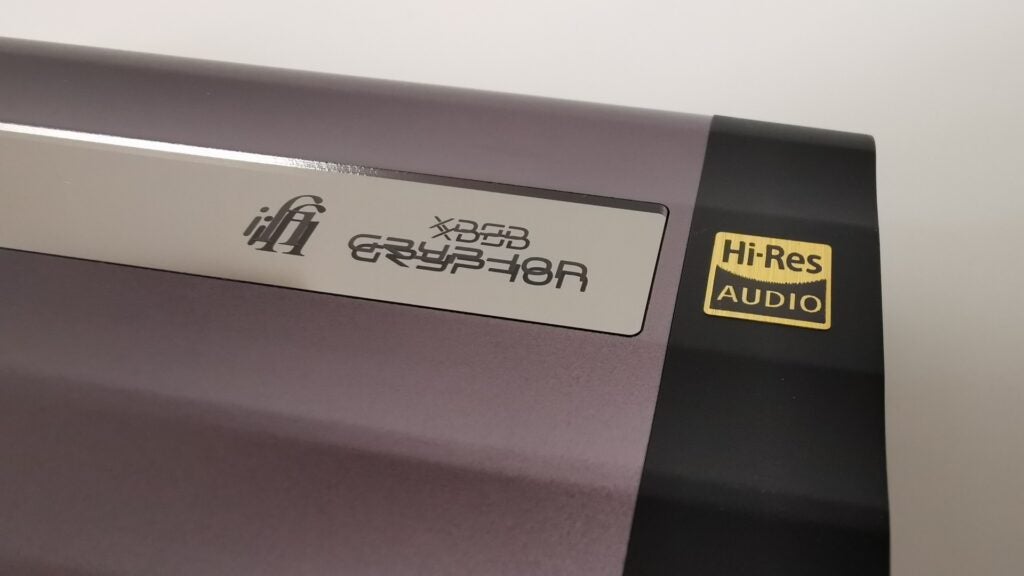
The xDSD employs a 3600mAh lithium Ion cell, which should keep you on the move for most of the day; battery life extends to around 8 hours.
Bluetooth format support is comprehensive: aptX, aptX HD, aptX Adaptive, aptX Low Latency, LDAC, HWA, AAC and SBC Codec with the unit using Qualcomm’s QCC5100 IC chip. Significantly, I never felt I was compromising performance when using Bluetooth.
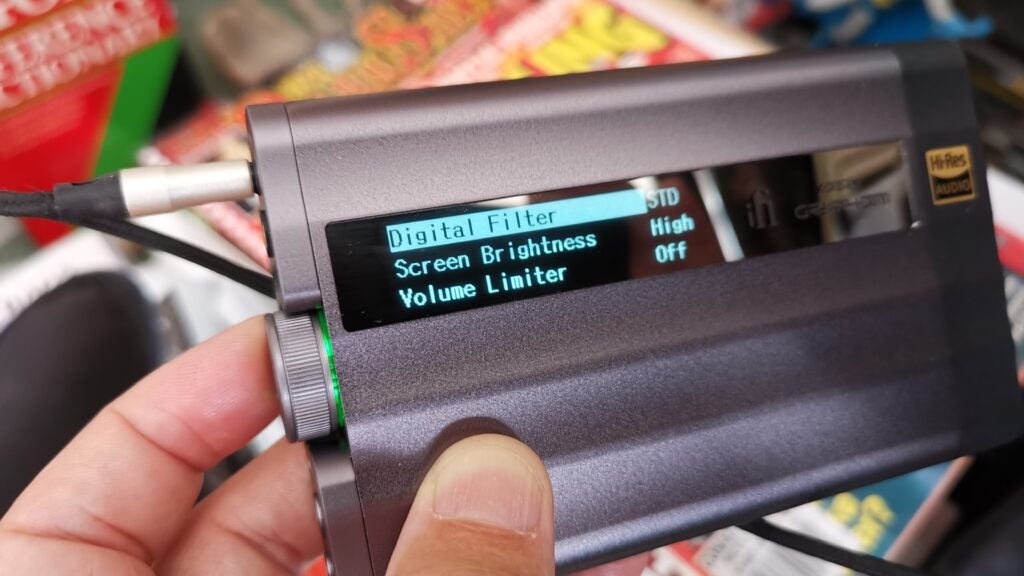
Usability is also high, thanks to its clearly legible OLED display. The Gryphon ships with a soft carry pouch and Lightning, USB-C and USB-A cables.
Sound Quality
- X-Space and X-bass II modes
- Digital filters
- Powerful amplification
Adjectives that aptly describe the sonic character of the xDSD Gryphon include clean, dynamic and insightful. In short, it’s a delight to listen to.
If you could peek beneath the lid, you’d discover that iFi Audio has kept Bluetooth, amplification and DAC separate to minimise noise and interference. The Gryphon actually uses the same Burr-Brown chipset as the brand’s flagship Pro iDSD Signature desktop DAC/Aamp. Attention to detail is high.
There’s some very elegant processing going on. The brand’s XSpace mode is used to create a more naturalistic soundstage for recordings, and it’s a little bit special. Engaging it adds air to any soundstage. It’s as if the Three Tenors had been told to give each other a bit more elbow room.
Is this presentation more accurate? I really don’t know – but it’s super comfortable to listen to.
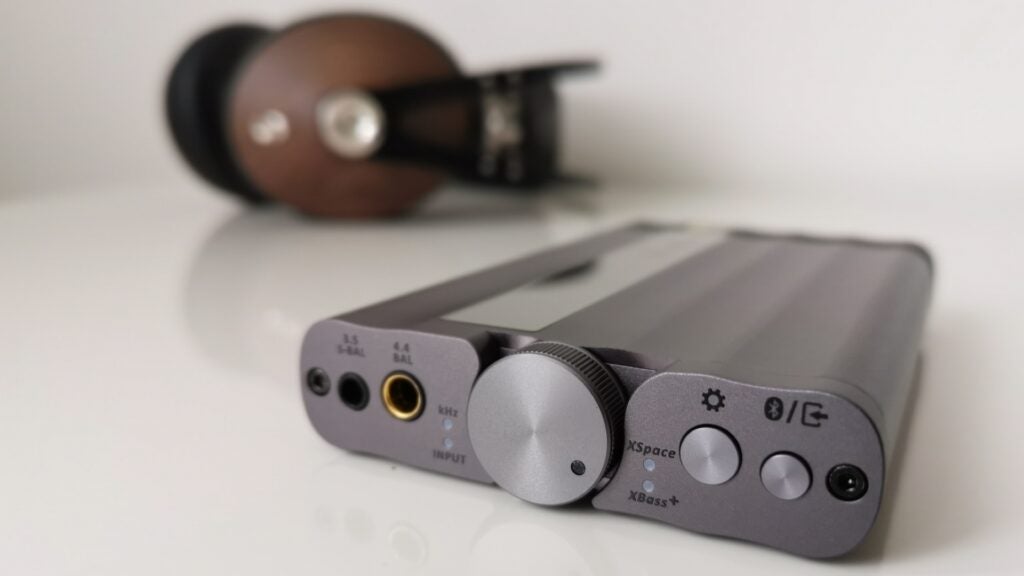
The DAC’s performance could be described as dry at times. If you hanker for a juicer bottom end, there’s XBass II processing that (unsurprisingly) emphasises bass. It adds a fun thump but I found it best used in combination with the more nuanced XSpace mode.
You can moderate the unit’s output using the physical XBass Presence toggle on the rear. At its centre point, the emphasis is placed on the mid-range, probably the best default position for most users.
Alternatively, you can dip it to emphasise boom, or tip it up to better blend bass and presence. Choosing between them is very much a personal choice. I found myself occasionally selecting the latter, to add body to percussion on simpler acoustic tracks like Faye Wong’s Unplugged (Tidal Master), without sacrificing the Gryphon’s characteristic top end sparkle.
The amplifier certainly has plenty of grunt and will drive even the most demanding of headphones. For the bulk of this review, I paired the Gryphon with a pair of Meze Audio 99 Classics, and the combo sounded superb.
Latest deals
Should you buy it?
You want a high-res audio DAC and headphone amp that boasts supreme versatility The Gryphon is as future-proof as you can get right now.
You don’t need Bluetooth functionality A similar sonic performance can be had from iFi Audio’s Hip-dac 2 which shares the same Burr Brown silicon but sells for less than half the price
Final Thoughts
If you need a high performance portable audio DAC but don’t want to sacrifice any aspect of functionality, the xDSD Gryphon currently has no peers. It’s a wonderful stereo performer that works well with a wide variety of wired headphones and sources; its feature specification is remarkable.
You’ll be hard pressed to find a source this doesn’t support or a hardware combination that it can’t integrate with. Build quality is also high, although it does tend to run warm.
Value for money can be considered excellent, given you really have to spend a good deal more to match what this DAC/headphone amp can offer.
How we test
We test every DAC we review thoroughly over an extended period of time. We use industry-standard tests to compare features properly. We’ll always tell you what we find. We never, ever, accept money to review a product.
Find out more about how we test in our ethics policy
Tested for more than a week
FAQs
The Gryphon natively supports MQA encoded files as the DAC can receive and decode tracks in the format.
Full specs
Sustainability
Trusted Reviews’ holds the fact that global warming is not a myth as a core value and will continuously endeavour to help protect our planet from harm in its business practices.
As part of this mission, whenever we review a product we send the company a series of questions to help us gauge and make transparent the impact the device has on the environment.
We currently haven’t received answers to the questions on this product, but will update this page the moment we do. You can see a detailed breakdown of the questions we ask and why in our sustainability info page.
Jargon buster
LDAC
LDAC is an audio technology from Sony that allows for higher quality audio streaming over a Bluetooth connection, with bit-rates of up to 990kbpsHi-Res Audio
Hi-Res audio is referred to as a standard as well as a marketing term that describes digital audio files of better-than-CD quality (16-bit/44.1kHz).


